Mitigating light pollution- Leveraging trophic cascades in ecological interventions
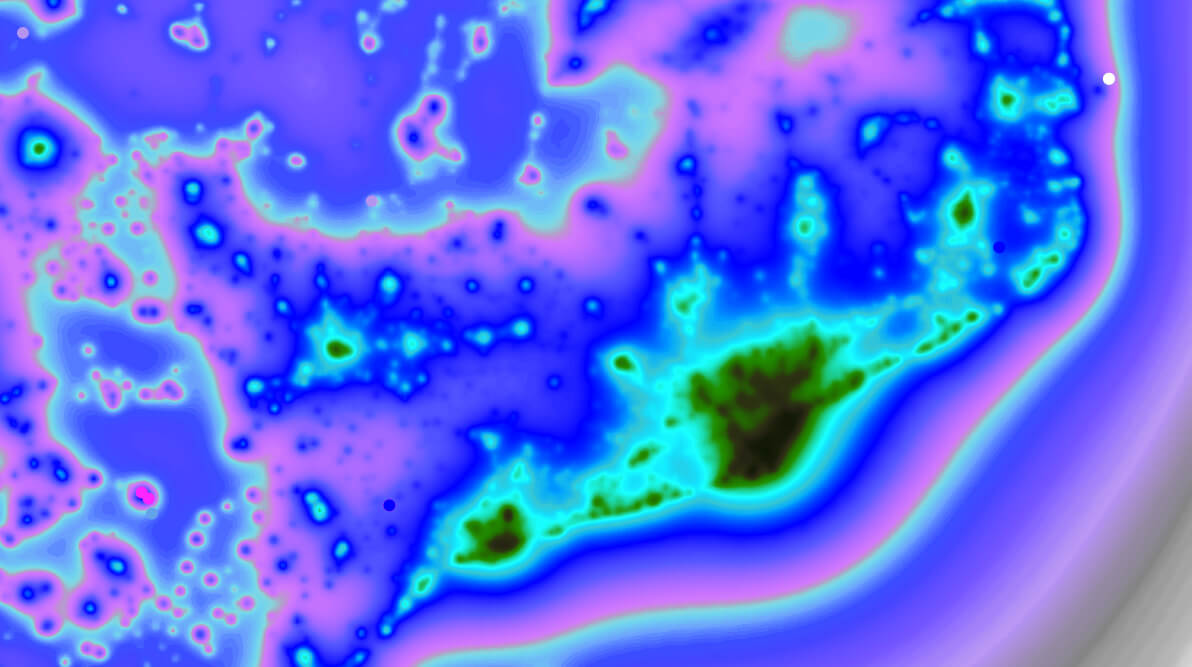
Site
the Intersection of Riu Ripoll and Riu Beso is the cloverleaf where the artificial urban system gives way to the natural ecosystem of river and forest. Measures of light pollution are highly correlated with this boundary and change dramatically around this threshold.

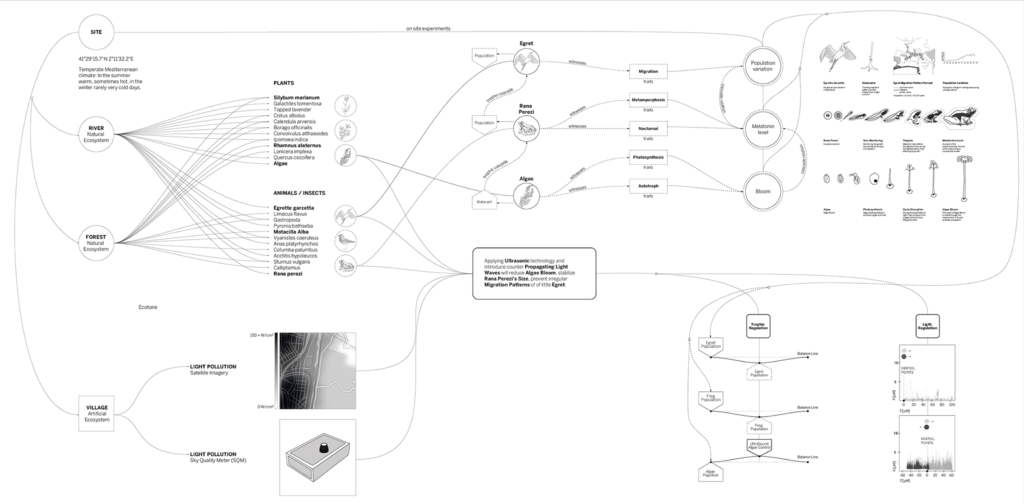
Indicator
The rich riparian ecotone at this intersection provides abundant resources to a great diversity of plant and animal species. As the main objects of our study, we selected interdependent species at different trophic levels: Egrette Garzetta, Rana Perezi and Algae. Our research found that light pollution affects each of them in different ways. The increased light exposure interacts with algae’s autotrophic traits resulting in excessive algal bloom. Light pollution causes vacillations in the melatonin level of Rana Perezi, affecting their metamorphic process and resulting in smaller average body size in adults. Light pollution also causes irregular migration patterns in Egrette Garzettas. Moreover, due to trophic cascade, the effects of light pollution from algae and Rana Perezi are compounded at the level of the Egrette Garzettate.
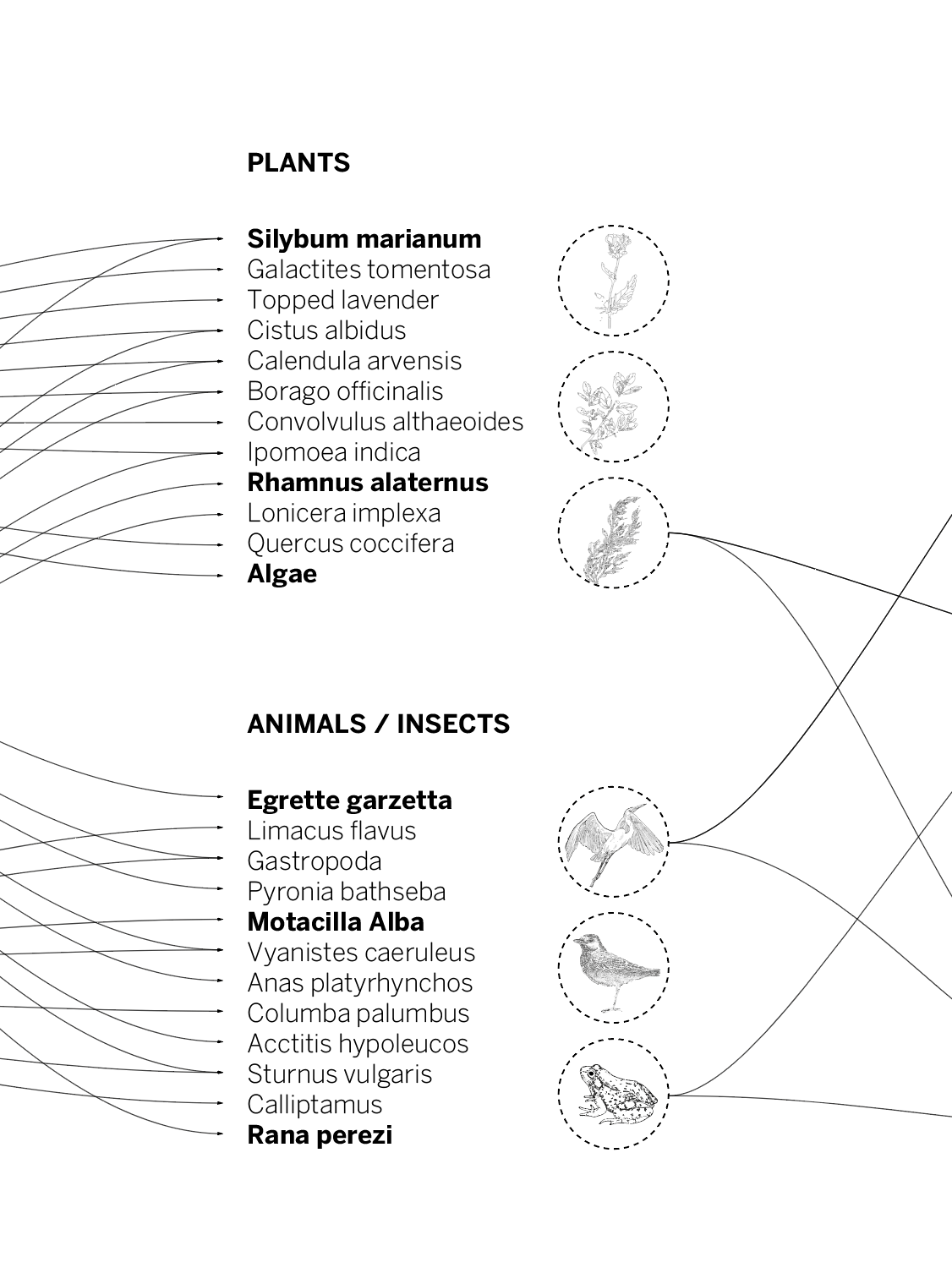
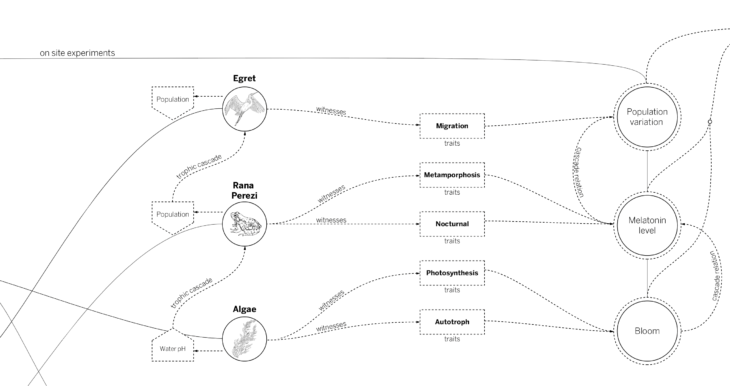
Intervention
We aimed to utilize a trophic cascade to amplify the effect of our intervention.
Our first intervention was to apply ultrasonic technology to reduce the algal Bloom, which can help stabilize the size of Rana Perezi, and lessen the impact on the migratory patterns of Egrette Garzetta.
The second intervention was to introduce counter propagating light waves in order to reduce the amount of light, as measured in photons, introduced into the habitat of Rana Perenzi.
No intervention was directly applied to Egrette Garzetta so as to limit the effect on this species to only the indirect effects of the trophic cascade.
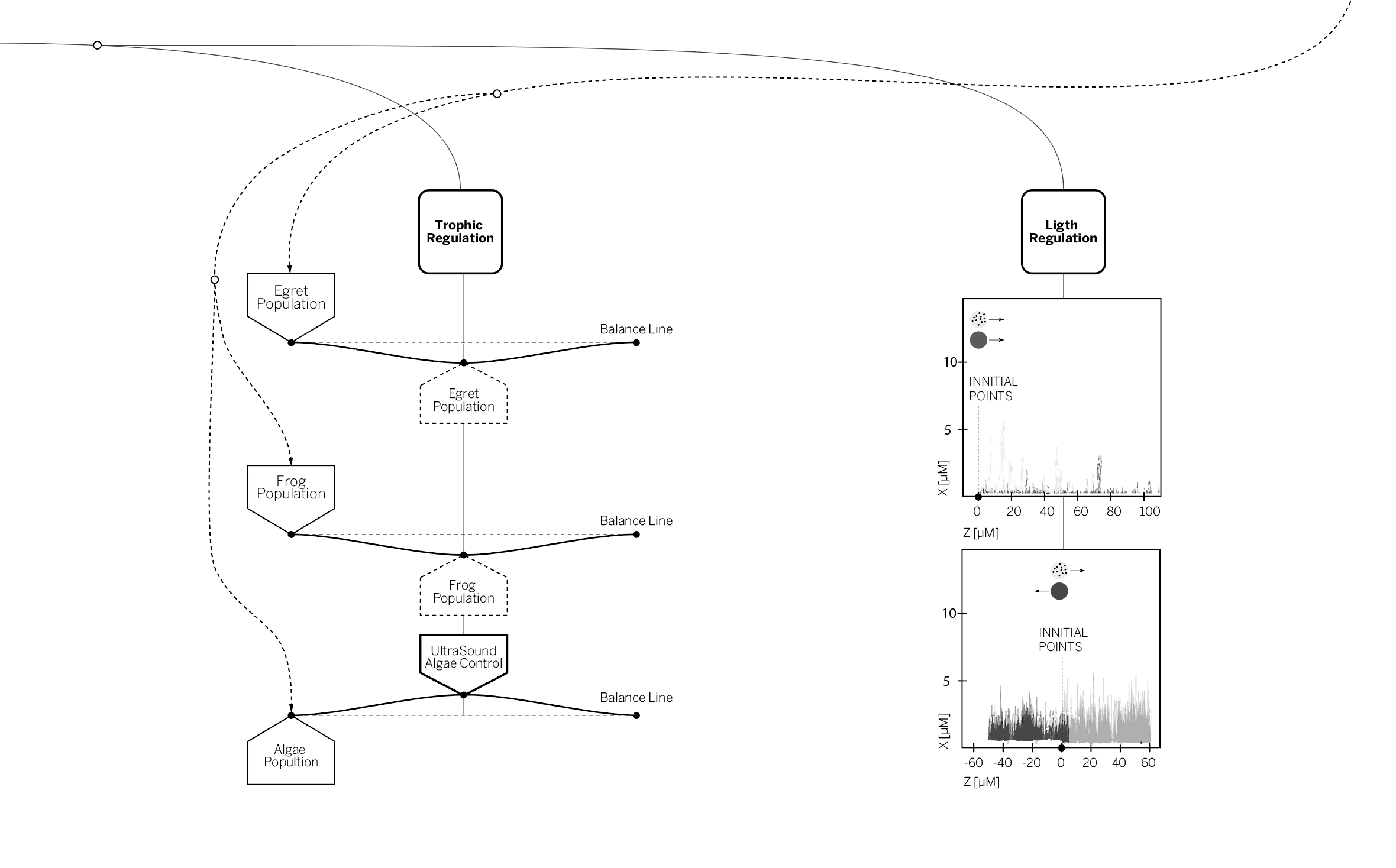
Observation
We applied the two interventions periodically on site.
We studied the effect on the algae measuring the water quality at each visit, utilizing the known inverse correlation between Algae bloom and water quality. We also monitored the size of adult Rana Perenzi at the site. Finally, we monitored the population variation of Egrette Garzetta through satellite monitoring. 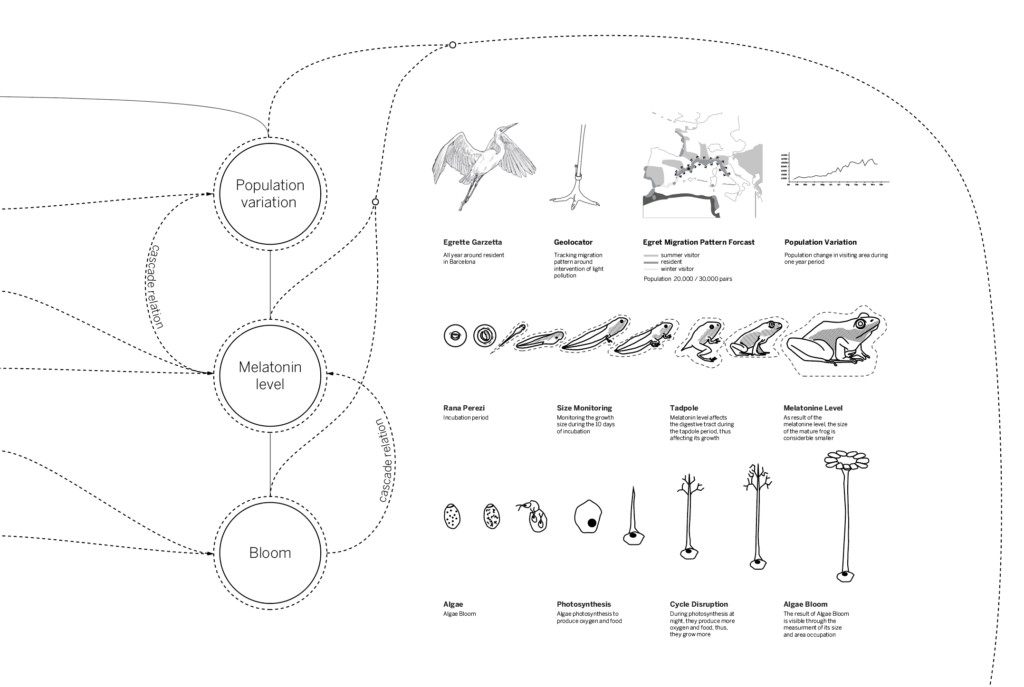
Our theoretical framework guides us to seek ecological solutions to mitigate the local consequences of light pollution on algae bloom, the size of Rana Perezi, and the migration patterns of Egrette Garzetta.
